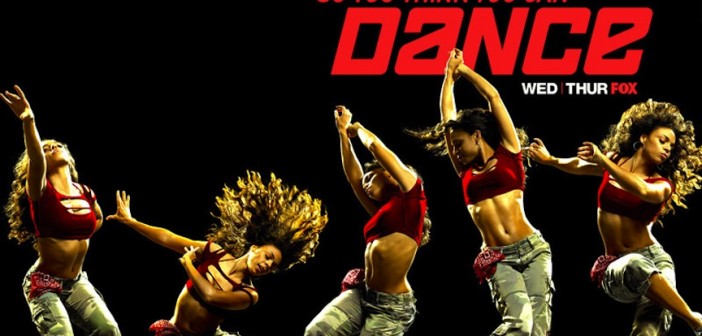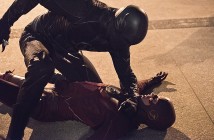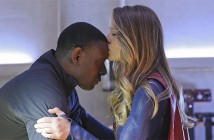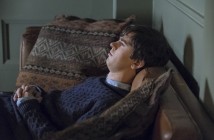As its prominence in the national lexicon became more prevalent, my aversion to what was branded “Reality TV” came largely from my belief that this term could only be used oxymoronically.
The goal seemed to be to put ordinary people in absurdly unreal situations (trapped on a desert island, stuck in a house with a bunch of strangers) in order to provoke a response that could somehow be interpreted as “real” emotion.
In the era following the 24-hour coverage of the O.J. Simpson chase and trial, America’s thirst for voyeurism was insatiable. Heisenberg Principle aside, the need to see real and intense dramas in other people’s actual lives bled into a need to create those dramas through careful planning, specific casting, and even scripting.
As a sports fan, I labeled this fake drama as unworthy of my interest. I watched a few seasons of Survivor but felt that true human triumph, tragedy, and emotion was often found in the world of sports. The storylines there are very real. In fact, the premise of sports is similar to the premise of reality TV: organize a set of circumstances and rules in order to force people into a situation that tests their mental and/or physical mettle.
The difference is, in sports, contestants have to possess some kind of appreciable skill at a high level.
Or rather, that was the difference until the arrival of the reality competition show. Game shows have been around almost as long as the television set but American Idol ushered in a new age of combining the voyeurism of shows like Big Brother and The Real World with a necessity for actual talent.
Rather than barely getting to know a competitor for one episode and them departing with the winnings, we wanted to delve into these people’s worlds and watch their hopeful journey from rags to riches.
Still, the show relied heavily on negative emotions as evidenced by the rise to fame of Simon Cowell, who is known mostly for verbally abusing poor singers who never should have been on the program to begin with. But for many, this was the reason to tune in, and the philosophy came to its logical conclusion with the Sanjaya phenomenon whereby the notion of the show as a legitimate competition jumped the shark; it became much more a means by which the country could collectively laugh at other people.
I lay all that out because—finally getting to the topic at hand—the show So You Think You Can Dance has grabbed my attention and my admiration by inverting these principles, using them almost as a road map of what not to do. By avoiding the common tropes of time crunches, faux subjectivity, and manufactured drama, as well as embracing artistic excellence and a prevailing sense of positivity, So You Think You Can Dance has become the king of reality competition.
The Time Crunch
For some reason, several shows in our genre operate with time as a primary component to adding drama. It makes more sense in shows like Iron Chef but I don’t get it for any music-based show or programs like Face Off and Project Runway.
Sometimes the cooking shows add to the time space-time continuum issue by requiring the chef to produce large quantities in short periods. This all undoubtedly adds drama but it partially obfuscates the talent we should be seeking to evaluate.
It is true that in these professions (especially that of chef) time can be a primary factor, but the ultimate goal here should be to find the person who is capable of making the best product. Too often, because of these time crunches, the final product ends up being a disaster that in any real job would have been given time to be fixed.
On shows like Face Off, this can happen when something breaks (usually a mold) and there isn’t enough time to start over. When the final piece is revealed, we get a look at a fraction of the artist’s original vision and we also have a built-in excuse for why the results aren’t that good.
How am I supposed to judge a completed project versus an uncompleted one? It muddies the decision-making process and robs the viewer of an authentic understanding of true talent due to a phenomenon in baseball known as the “small sample size.”
SYTYCD gives the dancers a week between routines so that by the time they perform, the question is whether or not they were able to master the steps and not merely memorize them. So not only are we getting a better look at what these talents can do when given enough time to attempt mastery, the final display (in this case, the dance routine) is considerably higher quality because nothing is rushed. This, in and of itself, makes for consistently better entertainment during the presentation phase.
Rather than forcing people into a jam to see who fails, SYTYCD puts the dancers in every position to succeed and simply asks, “Who was the best?”
Faux Subjectivity
As a singer/songwriter (technically) if I were going to be bias in favor of any of these shows it would be The Voice. I’ve even learned things and applied them in my real life just by watching that show.
I also appreciate that by having coaches rather than judges they do an excellent job of avoiding all the forced negativity and spectacle discussed above.
Perhaps then it is as a musician that I oft feel failed by the show. Let me be clear, I find it worlds more enjoyable than its American Idol and The X Factor counterparts because it’s such a positive show and the focus is on improving each of its participants. And of course, it’s nice that these shows shine a spotlight on talent that might otherwise never have seen the light of day.
Unfortunately, because of the way pop music has been mainstreamed with intricate precision and therefore become monolithic, the music selections often leave much to be desired and it is common to hear repeat songs from season to season; and not even particularly good songs.
The aftereffect of the focus on lyrically empty, melody driven ballads based around the same six chords regardless of genre is a public that fancies themselves experts on what good musicianship is.
This is the part where someone usually jumps in and calls me a music snob. The fact remains that any skill that a person can get better at, and compete in, has an element of objectivity to it. And the second it is left up to the American public to vote for anything music related, they invariably go with the powerhouse that most resembles the Dr. Pepper-style perfect blend of pop-ness that feels like all the music they are used to.
In this way, the show ends up celebrating someone who is very good at an established skill (singing loud and typically with an excellent high register) but exhibits very little in terms of creative ability or musicianship … even when it just comes to the act of singing.
There is more of a meritocracy in So You Think You Can Dance because most of us don’t fancy ourselves gurus. We tend to accept the actual expert opinions and up until the final few rounds the judges are in a position to trump the votes if America really messes up.
Additionally, whereas music shows often allow their competitors to stay inside a genre—The Voice even divvying up its coaches accordingly—SYTYCD forces the participants into all forms of dance so as to showcase any potential weaknesses. Tap dancers Zach Everhart and Valerie Rockey made it all the way to this season’s finale after dancing hip-hop, contemporary, jazz, Broadway, and the Viennese Waltz, among others. They don’t make the country singers attempt Coldplay.
As such, any one-trick ponies are weeded out where they often go as far as winning the other competition shows.
Music-based programming also finds itself trapped in a box when it comes to the kind of content they can produce. I seem to recall there once being a show aimed at song writers, but I guess we all just decided that was too hard. There is substantive circumstantial evidence to suggest that most music consumers are not interested in anything new but rather in excellent executions of the repackaging of old ideas.
At their absolute best, music shows can still only deliver awesome covers of songs most of us are already familiar with.
Every week on So You Think You Can Dance, something completely new is created right in front of us by artists capable of telling stories that would move anyone with less than a stone for a heart. Every week is an opportunity to see something we have never seen before. Every week, the choreographers and dancers express themselves through something unique and often crafted specifically for those people in that moment. There is no truer definition of the word “art.”
Every single week, SYTYCD captures imagination and paints it in full-colored, brilliant calligraphy that touches each edge of the dance floor.
What Is Drama?
What is the virtue in laughing at those who try and do not succeed?
I ask that question because this is a common pillar of reality television that is most artfully avoided by the show executive produced by Nigel Lythgoe—the anti-Simon Cowell.
When the viewing audience is given a look at an audition that did not land a spot on the show, 90 percent of the time it was because someone still displayed some unique creativity or exuberant and positive spirit, even if lacking in technique.
These people are to be applauded for doing what they love with gusto, damn the rest.
What So You Think You Can Dance does rely on for drama is the natural unfolding of events in the lives of their competitors, choreographers, and even as we have seen this season, the judges. The drama is often much more serious when aired. Rather than petty arguments and explosive personalities, we see real people dealing with life and death, loss and regret.
These dramas are enhanced by the nature of dance itself, which requires intimate and near-perfect cooperation. While remaining competitors, each dancer has to place, quite literally, their lives and physical well-being in the hands of the people they are competing against.
This is why every elimination on the show elicits a stream of tears from the contestants, much the way athletes in pro sports bond over the physical nature of the game and the inherent risk they all share. The fact that injuries are in play adds an element of drama that other reality competition shows cannot match.
Emilio Dosal is a hip-hop dancer who made it to this year’s Top 10, but missed out on the Top 20 last year after sustaining a serious injury. At the time, it felt like a huge blow right when it seemed like he was getting his big break, and though it was devastating for him then, he came back unafraid and excelled.
Fascinatingly enough, his replacement last season, Aaron Turner, who wouldn’t have even made the live performance stages of the competition if not for Emilio’s injury, got all the way to the season’s finale. In the end, Emilio’s injury helped America discover two incredibly talented dancers.
These are the kinds of storylines that help SYTYCD from having to manufacture fake drama.
That, combined with having an executive producer and head judge who are more interested in quoting Winston Churchill and John Lennon to inspire and comfort his young competitors, rather than employing insults and general hardassery to prove a point, makes the show a pleasant experience that builds people up rather than tearing them down.
And in this world, couldn’t we all use a little more of that?



